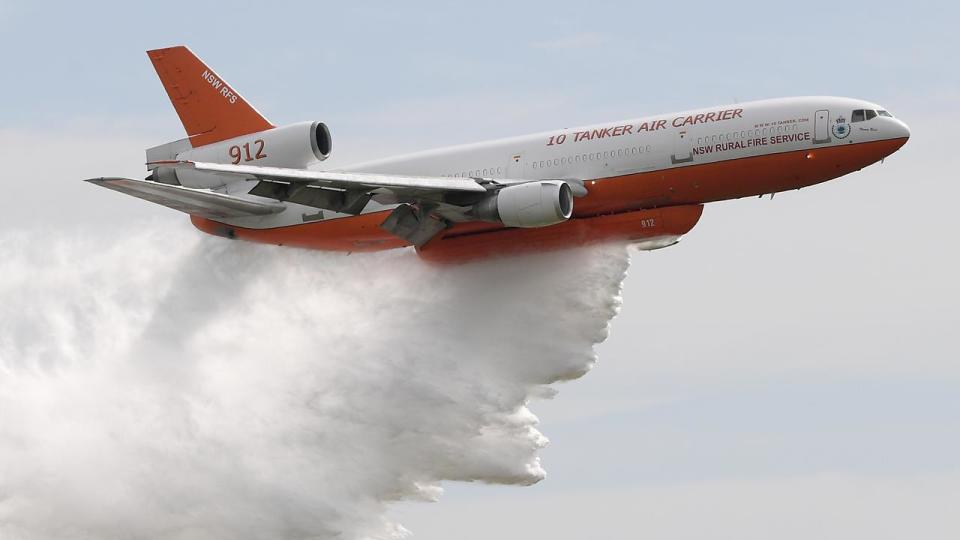Stephanie Gardiner
Fighting bushfires from the air is increasingly critical in an era of longer fire seasons, more complex blazes and overlapping disasters, an international conference has been told.
Those challenges come as the Australian firefighting industry grapples with an ageing workforce, a permanently disrupted supply chain and greater community expectations.
But artificial intelligence and bushfire simulators, which model the behaviour of blazes, could “disrupt” traditional firefighting, Australasian Fire and Emergency Service Authorities Council chief executive Rob Webb said.
“Imagine when we can understand which seasons are going to be longer with accuracy, such that we can hang our hats on it,” Mr Webb told the Aerial Firefighting Asia Pacific conference in Dubbo, western NSW, on Wednesday.
“Imagine when we can see when a fire starts whenever and wherever it happens and know which fires are the priority.”
The conference, which has drawn agencies from the US, UK and Luxembourg, began on the second day of NSW’s fire season, at the same time enormous wildfires burn in Canada and Greece.
Mr Webb, who is also a meteorologist, said overlapping fire seasons were becoming more common as global temperatures rise.
“Typically in an El Nino year you get much, much warmer conditions, but our La Nina years are warmer than El Nino years of old, which is pretty sobering,” he said.
“I see it as the springboard that a warming Earth gives us; it’s so much easier for us to get to the catastrophic (fire) levels.”
The growing role of aerial firefighting was seen during the Black Summer fires, when more than 11,000 bush and grass fires burnt seven per cent of NSW’s land mass, Rural Fire Service assistant commissioner Ben Millington said.
There were 317 aircraft deployed during that disaster in the summer of 2019-20, including large air tankers that dropped millions of litres of fire suppressant.
Mr Millington acknowledged the Australian Transport Safety Bureau urged the RFS to address three safety factors after an investigation into an air tanker crash that killed three US crew in January 2020.
The organisation had responded by creating an aviation dispatch and task rejection policy to alert all crews if another had refused a mission.
An inquest into the fires heard a small monitoring plane had rejected a task due to poor weather conditions at the same time the American crew was deployed.
The RFS had also introduced a dedicated large air tanker co-ordinator and was hiring an aviation safety officer.
Mr Millington said greater consistency in the way state and territory fire agencies operate was also a high priority.
“If the US can do it, there’s no reason why here in Australia we can’t adopt a similar approach.”
Source: https://au.news.yahoo.com/firefighting-ripe-tech-disruption-seasons-042906491.html

